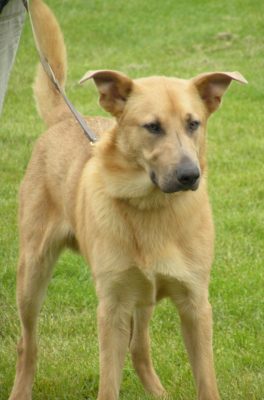Chinook
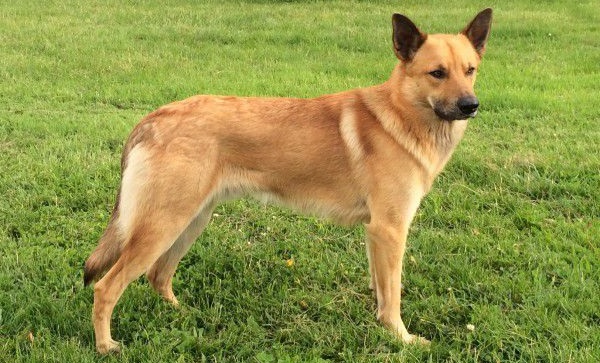
Chinooks are distinguished by their kindness, calmness, and nobility. They can live in all conditions and climatic zones. To people and other dogs, animals do not show aggression. It is difficult to take them out of their temper. They are recognized as good companions. Pets read the house’s atmosphere and will not pester the owner if the situation requires it.
Table of Contents
Breed Information
| Another Name | – |
| Origin | United States |
| Height | Males 58-69 cm Females 53-64 cm |
| Weight | 25-41 kg |
| Fur | Long |
| Color | White, golden-yellow, black with reddish tinges, yellowish-brown |
| Lifespan | 12-15 years |
| FCI Classification | Breeds outside the FCI classification |
| Group | Protection dogs, guard dogs, sled dogs, dogs for children |
| Price | From $1000 |
Breed Photos
Origin History
The breed is descended from sled dogs. It resulted from a cross between the Eskimo Spitz, Husky, and a representative of Saint Bernards. The dog was named Chinook by a member of the first Antarctic expedition, breeder Arthur Walden. He gave the name after one of the Eskimo dogs, which formed the basis of the breed. Another version of the origin says that the Chinooks have the blood of huskies and dogs. Only specimens with the best results in endurance and speed were used for crossbreeding. Walden wanted to create an American dog that would compare to the Siberian Husky.
The Chinook was born in 1917. The dog participated in sled dog races and often broke records in many categories. Ten years later, the Chinook became the dog sled leader that accompanied Admiral Baird to the South Pole. In the 1930s and ’40s, members of the breed were used as sled animals. But after World War II, their numbers began to decline rapidly. In 1965, the Chinook entered the Guinness Book of World Records as the smallest breed. In 1981, there were only 28 in the world. In 2013, the American Kennel Club officially recognized the Chinook. Their number was about 815. Today, dogs remain not particularly popular. And since 2009, they are considered a symbol of the American state of New Hampshire.
Appearance
Chinooks are powerful and strong animals. Average dry head with a long muzzle. Almond-shaped eyes are of medium size. Most often dark brown or amber in color. The large nose of black hue, as well as lips. The middle ears are spread wide apart and downward. The body is elongated and erect. The rounded chest protrudes forward. Well-developed forelegs – straight and strong. The toes are close together. The tail resembles a saber and points downward.
The coat has two layers – soft, dense undercoat and coarse hair. The hair is more pronounced on the tail and neck. Colors may include white, golden-yellow, black with red under paw, yellowish-brown. The presence of white spots is not officially recognized.
Character
Chinooks are distinguished by their kindness, calmness, and nobility. They can live in all conditions and climatic zones. To people and other dogs, animals do not show aggression. It is difficult to take them out of their temper. They are recognized as good companions. Pets read the house’s atmosphere and will not pester the owner if the situation requires it. They are endowed with a high intellect and love to learn. Representatives of this breed quickly find contact with children. Can be babysitters. But because of its large size, it is worth watching small children in the house.
Care
A dog’s long coat protects it from frost. Although the breed takes care of its coat, brush it regularly, at least twice a week. If possible, do it with a stiff brush that will provide a massage. Check your pet’s eyes daily. Clean the ears of buildup two to three times a week. File the nails once every ten days. Brush teeth with a brush or plaque scraper two to three times a week. It is better to accustom your pet to the procedure from an early age. Poor care can lead not only to dental problems but also to the failure of certain organs. It is recommended to bathe your pet no more than twice a week.
Training
By nature, dogs have a high level of energy and diligence. Therefore, it is worth organizing regular active training sessions. They should not be monotonous and the same. Chinooks love to learn new things, and training in the form of various games suits them best. That is why dogs do not have problems with training. During training, contact with the owner is important to them. No need to show anger in training. Show leadership, but don’t go to the point of aggression. Dogs are capable of being guards, companions, protectors, and helpers. But Chinooks are not suitable for attacking humans.
Common Diseases
Although Chinooks are large and tough dogs, the following diseases occur:
- allergies;
- epilepsy;
- hip dysplasia;
- cryptorchidism.
Nutrition
The breed can be fed both dry food and natural food. Adult Chinooks eat two or three times a day for 250-300 grams. Food should be quality and tested brands with the necessary complex of vitamins and minerals not to harm the pet’s health. If you choose natural food, observe the following ratio:
- 30-50% – meat (beef, chicken);
- 25-35% – porridge (rice, buckwheat, oatmeal);
- 20-30% – dairy products (cottage cheese, kefir, yogurt);
- 10-15% – vegetables (carrots, cabbage, pumpkin, etc.).
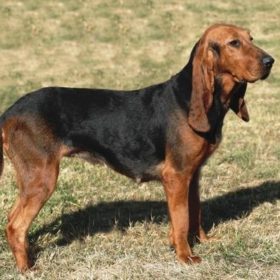 Bruno Jura Hound
Bruno Jura Hound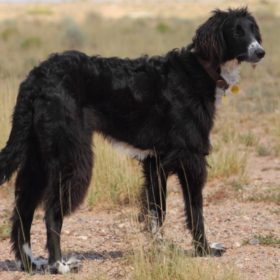 Taigan
Taigan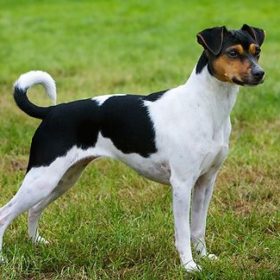 Brazilian Terrier
Brazilian Terrier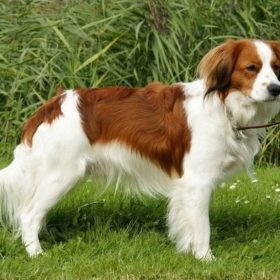 Kooikerhondje
Kooikerhondje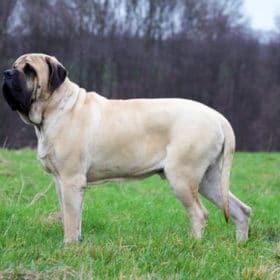 English Mastiff
English Mastiff Beagle-Harrier
Beagle-Harrier